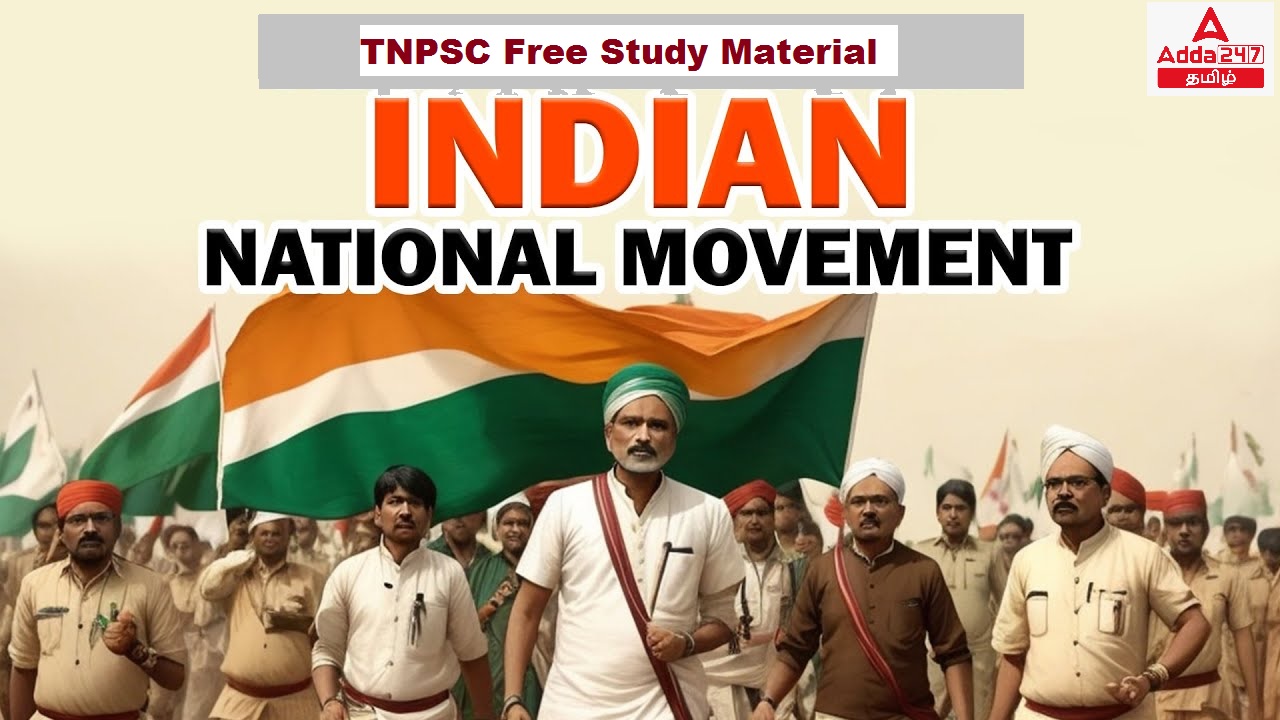இந்தக் கட்டுரையில், TNPSC குரூப் 1, குரூப் 2, குரூப் 2A, குரூப் 4 மாநிலப் போட்டித் தேர்வுகளான TNUSRB, TRB, TET, TNEB போன்றவற்றுக்கான முறைகள் இலவசக் குறிப்புகளைப் பெறுவீர்கள்.தேர்வுக்கு தயாராவோர் இங்குள்ள பாடக்குறிப்புகளை படித்து பயன்பெற வாழ்த்துகிறோம்.
Third Round Table Conference
From 17 November 1932 to 24 December 1932- The Third Round Table Conference was
held
The Congress did not participate in the conference as it had revived the Civil
Disobedience Movement.
Other than Congress 46 delegates participated in Third Round Table Conference.
In March 1933, the British Government issued a White Paper, which became the basis
for the enactment of the Government of India Act, 1935.
Emergence of Dr.B.R.Ambedkar
14 April 1891 – Born in Mhow village in Madhya Pradesh
Ramji Maloji Sakpal – Father
Bimabhai – Mother
Born in the untouchable caste called Mahar in Central India
He was the first to matriculate from his community.
1912 – He joined the Elphinston College
With the help of a scholarship from the Maharaja of Barona, he went to United States
and secured a post-graduate degree and doctorate from the Columbia University.
He went to study law and economics in London.
1916 – He participated in an international conference of Anthropology and presented a
research paper on ‘Castes in India’, which was later published in the Indian Antiquary.
British government which was searching for talents among the downtrodden of India
invited him to interact with the South borough or the Franchise Committee which was
collecting evidence on the quantum and qualifications to be fixed for the Indian voters.
Ambedkar first spoke about separate electorates.
He argued separate electorates and reserved seats for untouchables.
According to him, only untouchable voters were to vote and elect in the reserved seats,
those elected would be their real representatives.
Ambedkar’s Activism
Ambedkar launched news journals and organizations.
Mook Nayak (leader of the dumb) was the journal.
1924 – Bahishkrit Hitakarini Sabha (Association for the welfare of excluded) established
in Bombay.
As a member of the Bombay legislative council he worked tirelessly to secure removal of
disabilities imposed on untouchables.
1927 – He launched the ‘Mahad Satyagraha. To establish the civic right of the
untouchables to public tanks and wells.
Ambedkar’s intellectual and public activities drew the attention of all concerned.
His intellectual attacks were directed against leaders of the Indian National Congress
and the colonial bureaucracy.
In the meanwhile the struggle for freedom under Congress and Gandhi’s leadership had
reached a decisive phase with their declaration that their objective was to fight for
complete independence or ‘Purna Swaraj’.
1937 – Founded Labour Party
1942 – Scheduled Caste Federation
1942 – Defence Advisory Committee
Minister in the Viceroy’s Cabinet
His works
Compulsory Insurance for every Indians
The problem of rupee, its origin & resolution
Provincial decentralization of Imperial Finance in British India
Communal Award
16 August 1932 – Ramsay MacDonald, announced the Communal Award
Aim – To provide separate electorates to the minorities, viz. Muslims, Sikhs, Indian
Christians, Anglo-Indians and women and the “depressed classes.
Totally 78 reserved seats to minorities.
According to the proportion of depressed class members to the total population as well
as for adult franchise the Bengal Depressed Classes Association had lobbied for separate
electorates with seats reserved.
But the Simon Commission rejected the proposal of separate electorate for the
depressed classes; however, it retained the concept of reserving seats.
In the second Round Table Conference held in London, Ambedkar again raised the issue
of separate electorate for the depressed classes.
Ambedkar had attempted to compromise Gandhi on reserved seats in a common
electorate, but Gandhi rejected Ambedkar’s proposal
Committee on Minorities was formed under the chairmanship of Ramsay MacDonald.
Major Provisions of Communal Award
Muslims, Europeans, Sikhs, Indian Christians, Anglo- Indians, depressed classes, women,
and even the Marathas were to get separate electorates. Such an arrangement for the
depressed classes was to be made for a period of 20 years.
In the provincial legislatures, the seats were to be distributed on communal basis and
also existing seats were doubled
3 percent seats were to be reserved for women in all provinces, except in the North
West Frontier Province
The Muslims, wherever they were in minority, were to be granted a weightage.
The depressed classes to be declared the status of minority.
Double vote for depressed classes, one for separate electorates and the other for
general electorates.
Allocation of seats for labourers, landlords, traders and industrialists.
In the Bombay province 7 seats were to be allocated for the Marathas.
Congress Stand
The Congress opposed separate electorates and not in favour of changing the
Communal Award without the consent of the minorities.
The Congress decided neither to accept nor to reject Communal Award it.
The effort to separate the depressed classes from the rest of the Hindus by treating
them as separate political entities was opposed by all the nationalists.
Gandhi’s Response
Gandhi saw the Communal Award as an attack on Indian unity and nationalism.
According to him, it was harmful to both Hinduism and to the depressed classes.
Once the depressed classes were treated as a separate political entity, he argued, the
question of abolishing untouchability would get undermined
*************************************************************************
| Adda247 TamilNadu Home page | Click here |
| Official Website=Adda247 | Click here |




